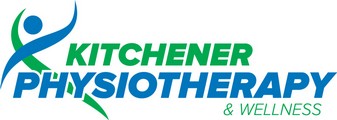Physiotherapy in Kitchener for Knee
Q: Can you give me a summary of what's happening with cartilage repair for knees these days? I have what's considered a full-thickness defect in the joint cartilage of my right knee.
A: Damage to the articular (joint surface) cartilage of the knee is a fairly common problem. For a long time, there was no treatment for this condition. But because so many athletes are affected and given the fact that knee joint (articular) cartilage doesn't repair itself, researchers started looking for ways to treat cartilage injuries of this type.
At first, they tried scraping the area and smoothing it down, a procedure called debridement. Then they tried drilling tiny holes into the bone marrow to stimulate bone healing. That's called microfracture. And they tried taking healthy cartilage from one part of the knee and transferring it to the lesion to fill in the hole.
All of these treatment methods had problems. There wasn't one approach that could work well for all different types and sizes of cartilage defects. That's when cell therapy was developed. Healthy cartilage cells (chondrocytes) were harvested from the knee but instead of using them directly in the damaged area, they were transferred to a lab.
In the lab, the cells were used to grow more cells. When there were enough cells to fill in the hole, they were reimplanted into the patient and covered with a patch made of periosteal (bone) cells. That procedure was called autologous chondrocyte implantation (ACI).
It was the first cell therapy devised for the problem of full-thickness (down to the bone) cartilage injuries. But there are some problems with this treament. The procedure is invasive and requires a two-step (staged) surgical procedure. That means at least two surgeries with all of the possible costs and risks that go with staged procedures.
Researchers have kept at it and made even more improvements. For the next batch of autologous chondrocyte implants, instead of covering the patched up hole with periosteum (bone cells), they used a collagen covering. The idea was to prevent overgrowth and keep a smooth surface. Overgrowth of bone called hypertrophy was a real problem with the periosteal patch.
Not quite satisfied, scientists continued trying different ways to improve cell therapies. The result was the current attempt to use a three-dimensional scaffold or frame upon which to grow new cartilage cells. This is the procedure that's called the matrix-induced autologous chondrocyte implantation (MACI).
MACI is still a two-step procedure that starts with the harvesting of healthy chondrocytes that are then taken to the lab to reproduce. Only this time, they are placed directly onto the scaffold that is made of type I and III collagen tissue. When the transplanted cells (taken from the patient's body) have reproduced enough (in the lab) to fill in the gaps on the collagen scaffold, then the patient returns to the operating room and the MACI implant is cut to fit the defect and glued in place.
Matrix-induced autologous chondrocyte implantation (MACI) is a less invasive treatment technique that has improved on earlier methods of cartilage repair. Surgical time is shorter because there's no need for a periosteal flap or microsuturing the implant in place (they use glue instead).
Quality of tissue repair is good and the procedure appears to be safe. So far, all we have are short-term results. Future studies will continue to report data that will further reflect the long-term results of MACI. Moderate-to-large cartilage defects can be repaired this way. Affected individuals (especially athletes) are able to get back to an active lifestyle, including full sports participation.
Reference: Mats Brittberg, MD, PhD. Cell Carriers as the Next Generation of Cell Therapy for Cartilage Repair. In The American Journal of Sports Medicine. June 2010. Vol. 38. No. 6. Pp. 1259-1271.








